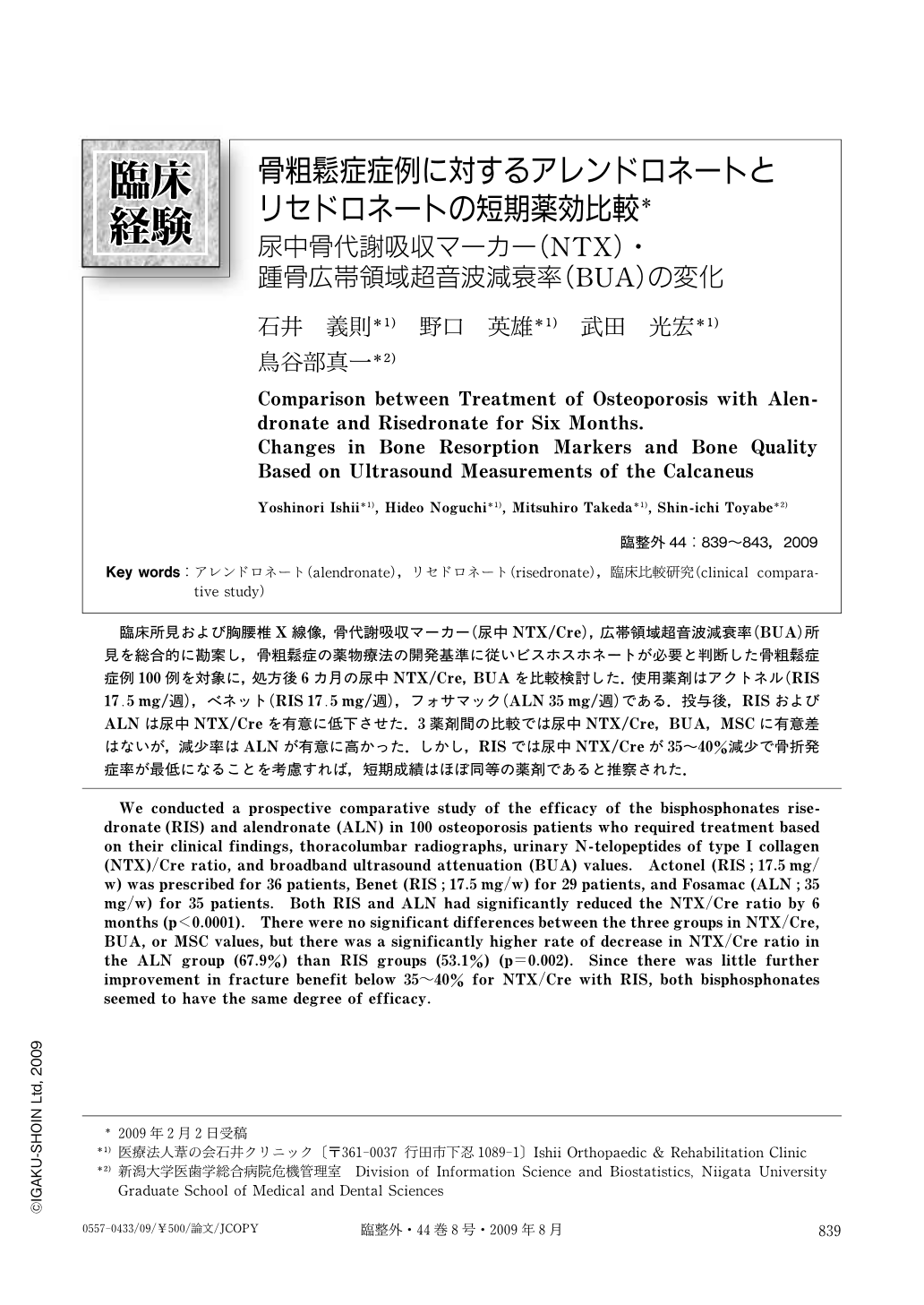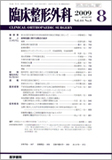Japanese
English
- 有料閲覧
- Abstract 文献概要
- 1ページ目 Look Inside
- 参考文献 Reference
臨床所見および胸腰椎X線像,骨代謝吸収マーカー(尿中NTX/Cre),広帯領域超音波減衰率(BUA)所見を総合的に勘案し,骨粗鬆症の薬物療法の開発基準に従いビスホスホネートが必要と判断した骨粗鬆症症例100例を対象に,処方後6カ月の尿中NTX/Cre,BUAを比較検討した.使用薬剤はアクトネル(RIS17.5mg/週),ベネット(RIS17.5mg/週),フォサマック(ALN35mg/週)である.投与後,RISおよびALNは尿中NTX/Creを有意に低下させた.3薬剤間の比較では尿中NTX/Cre,BUA,MSCに有意差はないが,減少率はALNが有意に高かった.しかし,RISでは尿中NTX/Creが35~40%減少で骨折発症率が最低になることを考慮すれば,短期成績はほぼ同等の薬剤であると推察された.
We conducted a prospective comparative study of the efficacy of the bisphosphonates risedronate (RIS) and alendronate (ALN) in 100 osteoporosis patients who required treatment based on their clinical findings, thoracolumbar radiographs, urinary N-telopeptides of type I collagen (NTX)/Cre ratio, and broadband ultrasound attenuation (BUA) values. Actonel (RIS;17.5mg/w) was prescribed for 36 patients, Benet (RIS;17.5mg/w) for 29 patients, and Fosamac (ALN;35mg/w) for 35 patients. Both RIS and ALN had significantly reduced the NTX/Cre ratio by 6 months (p<0.0001). There were no significant differences between the three groups in NTX/Cre, BUA, or MSC values, but there was a significantly higher rate of decrease in NTX/Cre ratio in the ALN group (67.9%) than RIS groups (53.1%) (p=0.002). Since there was little further improvement in fracture benefit below 35~40% for NTX/Cre with RIS, both bisphosphonates seemed to have the same degree of efficacy.

Copyright © 2009, Igaku-Shoin Ltd. All rights reserved.


